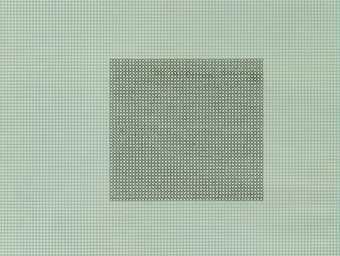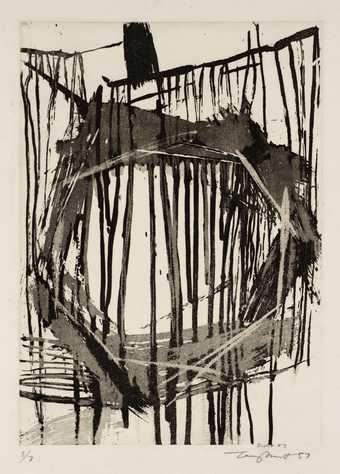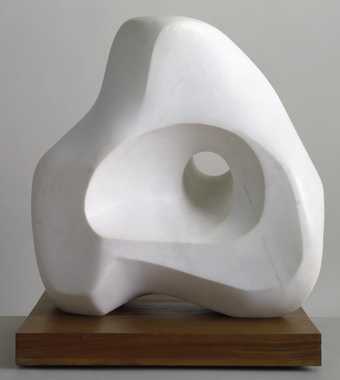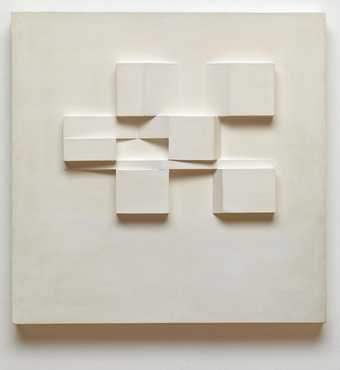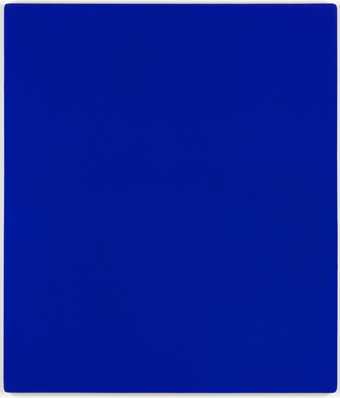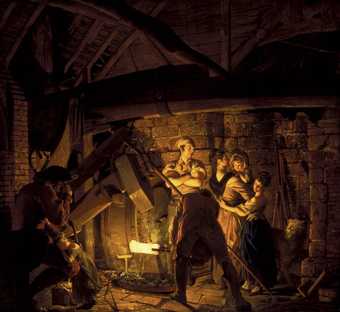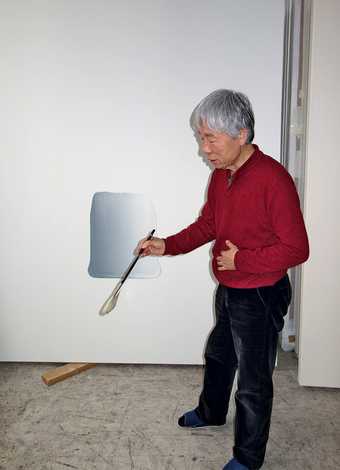
Cornelia Parker CBE RA
Cold Dark Matter: An Exploded View
(1991)
Tate
Abstraction: Shape, Form, and Movement
Monochrome compositions
Artists often use a monochrome palette – black, white and shades of grey – to explore shapes, patterns and composition.
Eva Hesse's delicate abstract drawing, Untitled 1967 is made using a surprisingly simple technique. She has filled the tiny squares on a sheet of graph paper with single circles. Although this may sound a bit mechanical and boring, the result is an unexpectedly non-mechanical, subtly textured artwork.
For his abstract painting Black and White Movement 1952, Terry Frost uses contrasting black and white shapes and lines to create a sense of rhythm. In other works, such as Composition 1957, he has used white and black abstract marks and shapes to express his response to seeing a landscape in the snow. 'We strolled or struggled through the snow ... It was a clear bright day and I looked up and saw the white sun spinning on the top of a copse'. Although abstract, by using only monotone colours, he puts across the feeling of the wintry scene: the contrasts of light and dark caused by bright sun on snow and the patterns that frost and ice make – the vertical black lines look a little like dripping icicles.
Bridget Riley's paintings and prints rely on tonal contrasts between black, white and grey to create a sense of movement. By carefully manipulating the lightness and darkness of the shapes and background, her images seem to undulate and move. Bridgett Riley was an Op artist. Op Art was a 1960s art movement that saw artists experimenting with geometric forms to create optical effects.
Like Bridget Riley, painter Gillian Carnegie manipulates light and dark in her work Black Square 2008. At first the painting just looks like a plain black square. But Carnegie has combined matt and glossy black paint, and uses it thickly so the brushstrokes delineate the image – trunks and branches of trees. As you move around the work, light catching on the ridges of brushstrokes and different areas of gloss and matt surface reveal the image.
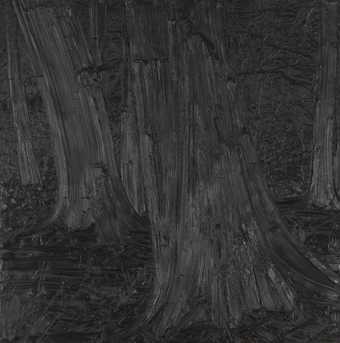
Gillian Carnegie
Black Square
(2008)
Tate
Shadow and abstract forms
The dark shadows made by brightly lit objects become abstracted in Patrick Caulfield’s simplified compositions such as Braque Curtain 2005 and Lung Ch’uan Ware and Black Lamp 1990.
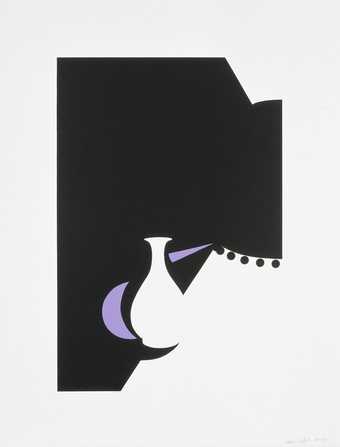
Patrick Caulfield
Lung Ch’uan Ware and Black Lamp
(1990)
Tate
© The estate of Patrick Caulfield. All Rights Reserved, DACS 2024
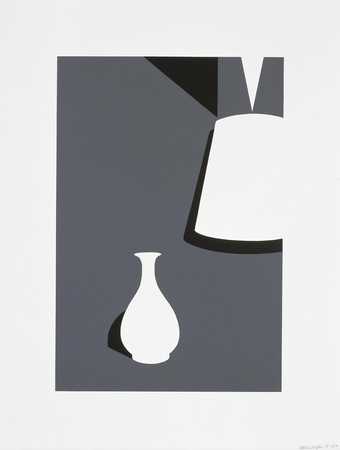
Patrick Caulfield
Lamp and Lung Ch’uan Ware
(1990)
Tate
© The estate of Patrick Caulfield. All Rights Reserved, DACS 2024
The light and dark of objects and shadows are also used to explore abstract shapes in three-dimensional artworks. Shadow plays an important role in many of Barbara Hepworth’s sculptures. In works such as Image II 1960, the shadows created by the abstract shapes of the sculpture are essential to how we see it.
The strong abstract forms and textures in these artworks by Mary Martin and Sergio de Camargo are created by shadows. The sculptural reliefs are made from white plaster, but the light shining on them creates shadow shapes, and a rhythmic pattern of lights and darks.
Light, shadow and movement
By suspending small dark squares of plastic from nylon threads, Julio Le Parc creates a simple mobile. The light shining on these shapes creates a pattern of dancing shadows on the wall.
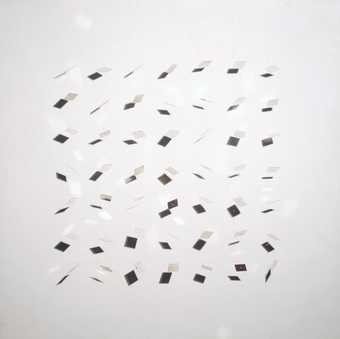
Julio Le Parc
Continual Mobile, Continual Light
(1963)
Tate

Cornelia Parker CBE RA
Cold Dark Matter: An Exploded View
(1991)
Tate
Artist Cornelia Parker makes use of the shadows created by suspended shapes in her installation Cold Dark Matter: An Exploded View 1991. To make the artwork, she exploded a garden shed (literally!!) complete with all the tools and the type of junk that gets stored in sheds. By suspending the fragments of the destroyed shed and its contents, the explosion seems to be paused mid-air. You can find out more about the ideas and processes behind this spectacular artwork in this Look Closer resource.
Photography, Light and Shadow
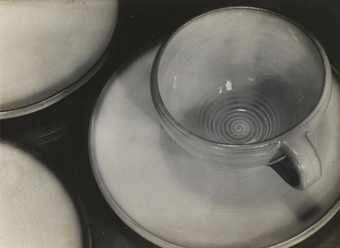
Aenne Biermann
Ceramic Cup
(c.1929)
Tate
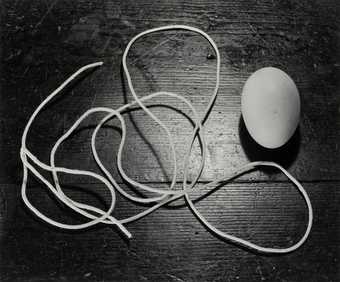
Horacio Coppola
Egg and Twine
(1932, printed c.1950–70)
Tate
© Estate of Horacio Coppola courtesy Galeria Jorge Mara - La Ruche, Buenos Aires, 2015
Photographers often make use of the contrast between light and dark – form and shadow – to create striking images.
Even the most everyday things such as teacups on saucers become interesting if you focus on the lights and darks of their forms. By photographing a white egg and white piece of string on a black surface, Horacio Coppola makes a black and white abstract composition. The string loks like a squiggly abstract line.
Photographers Lucia Moholy and Werner Mantz explore the lights and shadows of architectural structures, creating powerful compositions of lights and darks.
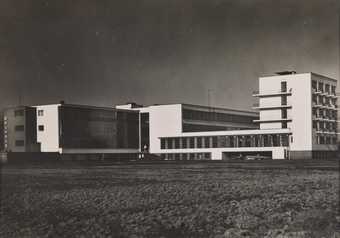
Lucia Moholy
Bauhaus Building, Dessau
(1925–6)
Tate
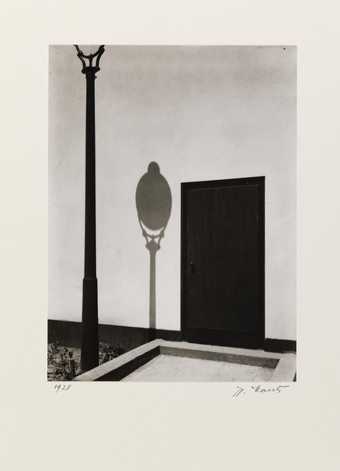
Werner Mantz
Detail of Kalkerfeld settlement, Cologne 1928
(1928, printed 1977)
Tate
Uta Barth has used a dramatically cropped clipping from a magazine photograph to create this print. The bare arm against a blurred background becomes abstract as we focus on the light and dark shapes of the composition rather than the figure. It is one of a series of similar prints she has made using cropped found images:
Recently I have become very interested in this collection of small clippings Most of them include a small section of the figure that has been cut away. They have a shoulder, a hand or part of a face at the very edge, but because of the way I have cut them, the centre of the pictures, the place we are trained to look, is now empty ... I keep trying to find ways to shift the viewer's attention away from the object they are looking at and toward their own perceptual process in relation to that object.
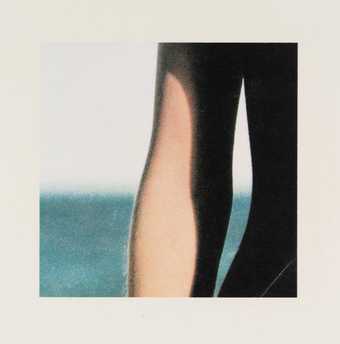
Uta Barth
[no title]
(1995–7)
Tate
As well as exploring forms, shapes and patterns – the light and dark shades of black and white photography can also be used to create a powerful sense of mood. Francesca Woodman’s photographs of herself in almost empty interiors explore the relationship between figure and space. By using various photographic techniques such as prolonged exposures, as well as the effects of light and dark in a space, the images appear ethereal and intriguing.

Francesca Woodman
Space², Providence, Rhode Island
(1976)
ARTIST ROOMS Tate and National Galleries of Scotland
© Woodman Family Foundation / Artist’s Rights Society (ARS), New York and DACS, London
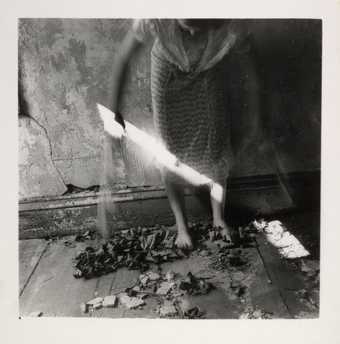
Francesca Woodman
Untitled, Providence, Rhode Island
(1975–8)
ARTIST ROOMS Tate and National Galleries of Scotland
© Woodman Family Foundation / Artist’s Rights Society (ARS), New York and DACS, London
This derelict-looking interior is one of a series of photographs by Christine Sullivan who also uses photography to explore the lights and darks within spaces. The photograph is of the power station building that became Tate Modern. The single electric light, and the shadows and reflections highlight the unlikely beauty and poetry of the derelict space.
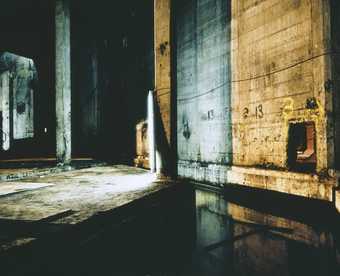
Christine Sullivan
Narcissus
(1999)
Tate
Times of Day (and Night)
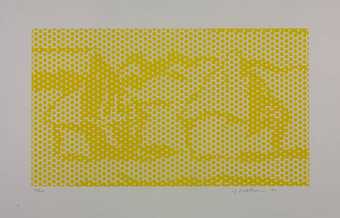
Roy Lichtenstein
Haystacks #1
(1969)
Tate
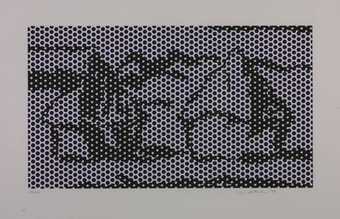
Roy Lichtenstein
Haystacks #3
(1969)
Tate
Light and dark in art can be explored in relation to times of the day. Impressionist artist Claude Monet painted landscape scenes at different times of the day in order to capture the changing effects of light. Inspired by Monet’s series of paintings of haystacks in a field, pop artist Roy Lichtenstein created a series of prints of haystacks, using light and dark coloured dots to suggest the times of day.
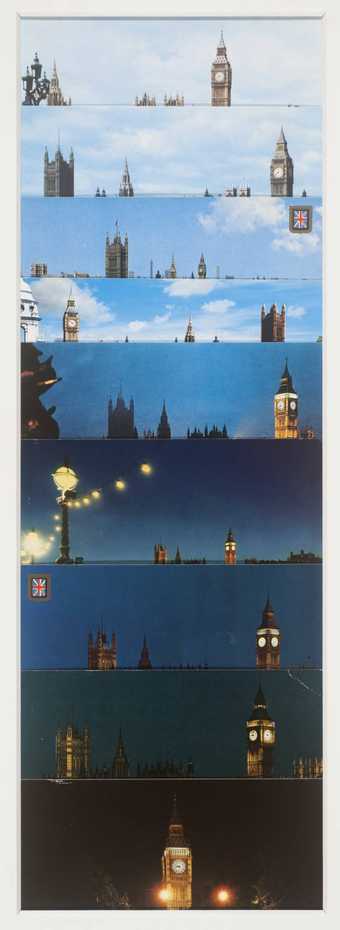
John Stezaker
The End
(1975)
Tate
John Stezaker explores the effects of the changing light in his collage The End 1975. The collage is made by overlapping, in a vertical row, nine postcard views of London’s Houses of Parliament at different times of the day. He placed the postcards in order of the deepening shades of the sky, beginning with a pale, hazy whitish-blue at the top and ending with the darkest, midnight blue at the bottom.
Samuel Palmer uses black and white ink to depict the extreme contrasts of light and dark in his moonlit landscape. While Josef Herman’s evening scene is bursting with colour. The bright red evening sky lights up the village street. Herman makes extensive use of contrasts between light in his powerful scenes of mining villages in South Wales. Explore more of his drawings and paintings.
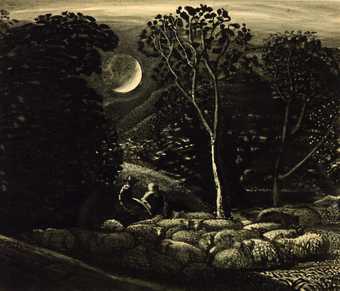
Samuel Palmer
Moonlight, a Landscape with Sheep
(c.1831–3)
Tate
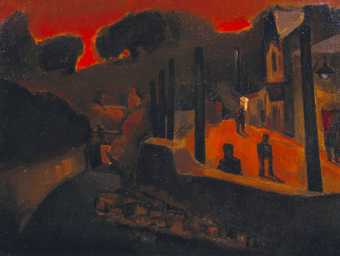
Josef Herman
Evening, Ystradgynlais
(1948)
Tate
Catherine Yass and Julian Opie manipulate photographs to explore the lights and darks of cityscapes at night. Yass's image of the lights of Tokyo shows ghostly buildings behind patterns of luminous neon lights. It was made by taking two photographs several seconds apart, and then superimposing them (putting one on top of the other). One image is positive, the other negative, resulting in the light areas of the positive being filled in by the colour produced by the negative.
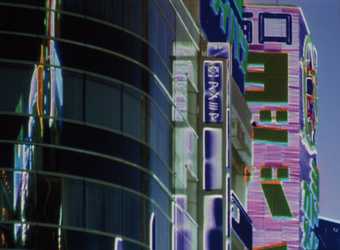
Catherine Yass
Northwest D2
(2001)
Tate
An urban street at night is also the subject of Julian Opie's Rain Footsteps Siren 2000. The street could be anywhere and somehow feels familiar. To create this striking image Opie scanned a photograph of a street at night onto a computer and altered it digitally, emptying the image of detail by blocking in areas of flat colour. The result is a generalised or universal image of an urban scene at night.
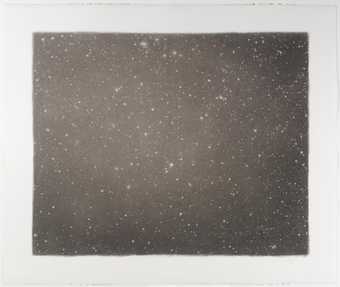
Vija Celmins
Night Sky #19
(1998)
ARTIST ROOMS Tate and National Galleries of Scotland
A photograph of a night sky is the source for Vija Celmins's work Night Sky #19 1998. To make the drawing, she covered the surface of her paper with charcoal and then used an eraser to rub out the pinpoints of stars in the dark sky.
Light and Dark as Symbol
Damien Hirst’s Monument to the Living and the Dead 2006 is composed of two equal-sized square canvases. Each canvas is covered with a layer of monotone household gloss paint, in which exotic butterflies are embedded. Butterflies are traditional symbols of the soul and Hirst often uses them in his work as a metaphor for mortality. Pairing a black canvas with a white canvas has a special significance for Hirst. He explained:
I’ve always been interested in the split between mind and body, the one and the other, the difference between art and life, life and death, like black and white … Trying to explain or imagine death is like trying to imagine black by only using white. There’s no way you can get to it, it’s like the same thing but opposite. This is life and death isn’t.
Mystery, ambiguity and the frustration of not knowing or understanding is symbolised in the black square of Shirazeh Houshiary’s painting Veil 1999 which belongs to a series of works called Self Portraits. The title refers to the chador (black veil) worn by Islamic women. The black square is painted in acrylic paint and has Arabic texts written on it using varying strengths of graphite pencil. This creates a delicate surface that is dramatically transformed by different light conditions. Houshiary explains:
We always think we know but yet we really don’t know, and Black Square is a protest against knowing. There is a frustration when you don’t see, but then that’s when you question.
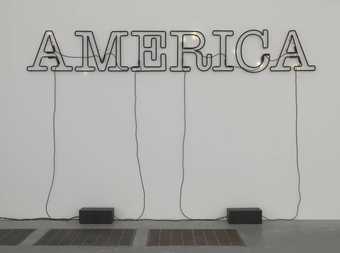
Glenn Ligon
Untitled
(2006)
Tate
By painting neon light tubes with black paint, artist Glenn Ligon subverts the idea of light and dark. Much of Ligon's work relates to his experiences as an African American man living in the United States. The neon tubes spell out the word America and Ligon sees the work as a type of portrait of his country. Despite elements of darkness in its history and politics and the discrimination and hard times that many people living in America face; there is also goodness and hope. This sense of hope is symbolised by the chinks of light that shine through the black paint where flakes of paint have chipped off.
Light and dark: Idea and Experience
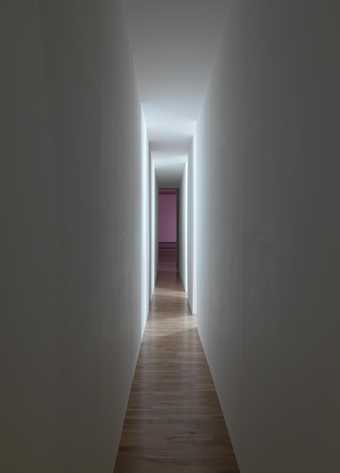
Bruce Nauman
Changing Light Corridor with Rooms
(1971)
ARTIST ROOMS Tate and National Galleries of Scotland
Rather than simply suggesting the effects of light some contemporary artists have directly used electric lights as their medium, exploring the impact of light in dark spaces.
In the 1960s and 1970s artist Bruce Nauman created various claustrophobic and enclosed spaces that were designed to disorientate his audiences. His installation, Changing Light Corridor with Rooms 1971 is a long dark corridor, with two rooms on either side lit by bulbs. The bulbs are timed to flash at different rates. The length and narrow width of the corridor, together with the intensity of the flashing lights, affect our movements as we walk through the space. No longer simply passive spectators, Nauman transforms us into active participants who he controls and manipulates.
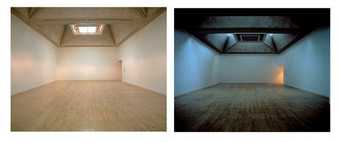
Martin Creed The lights going on and off 2000
Photo: Tate Photography © Martin Creed
Martin Creed often uses electric lights in his works – often spelling out phrases with neon tubes. In his Work No. 227: The lights going on and off 2000 he used light to affect how we experience space. It consists of an empty room which is filled with light for five seconds and then plunged into darkness for five seconds repeatedly. An empty room with what seems to be faulty lighting confuses our expectations of visiting a gallery. Rather than seeing artworks on the walls we see an empty room that is lit up every five seconds. This makes us focus on the space itself with its various fittings and fixtures.
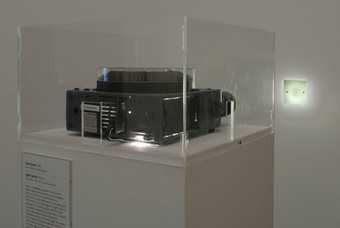
Ceal Floyer
Light Switch
(1992–9)
Tate
Ceal Floyer humorously plays with the idea and qualities of light and dark. Light Switch 1992–9, is a colour photographic slide image of a light switch, projected to scale on a wall. The projected image of the light switch relies on the darkness of the room for it to be visible.
Have a Go!
We’ve pulled together some ideas to help you get started.
Make it Monotone
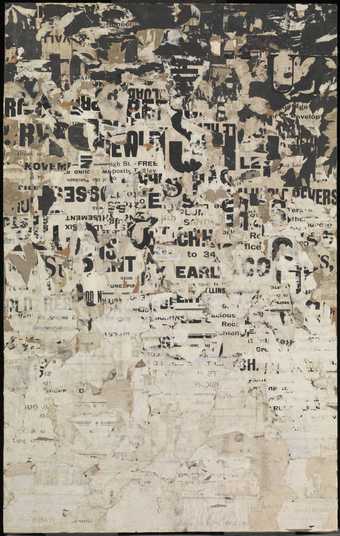
Gwyther Irwin
Letter Rain
(1959)
Tate

Sir Terry Frost
Boat Shapes
(1954)
Tate
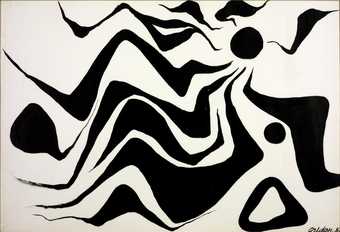
Alexander Calder
Black Sun
(1953)
Tate
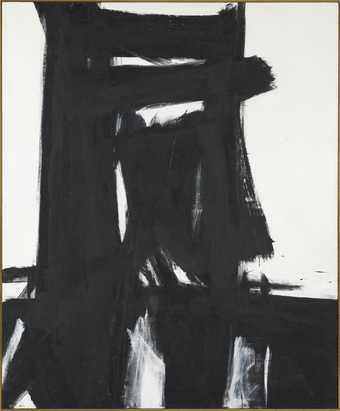
Franz Kline
Meryon
(1960–1)
Tate
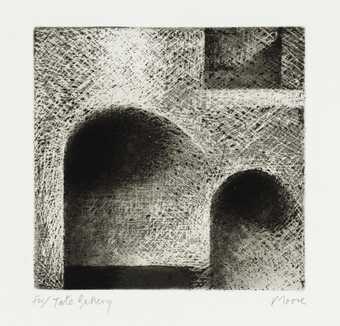
Henry Moore OM, CH
Tunnel Arch and Window
(1971, published 1978)
Tate
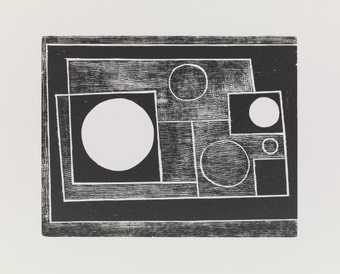
Ben Nicholson OM
abstract
(1934)
Tate
Try using only black, white and grey to make a painting or drawing.
- Start with a colour photograph of a place or people and translate the different shades you see into black, white or grey.
- Make abstract compositions using only black and white. Have a look at the artworks above to get some ideas.
- Explore the optical effects of juxtaposing black and white like the Op artists.
Shadow Play
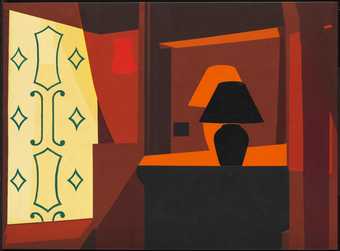
Patrick Caulfield
Braque Curtain
(2005)
Tate
© The estate of Patrick Caulfield. All Rights Reserved, DACS 2024

Cornelia Parker CBE RA
Cold Dark Matter: An Exploded View
(1991)
Tate
Use an electric lamp or torch to create shadows in a dark space.
- Try placing the light at varying distances from an object – what effect does this have on the shadows?
- Photograph or draw the shadows and use these as the starting point for your artwork. You could use the shadowy room to make a dramatic (or scary) interior scene. Or use the shadow shapes to make an abstract composition – cut out the shadow shapes from black paper and arrange them in different ways.
Create a 3D relief by sticking white objects on a board. (The ‘objects’ could be shapes made from plaster, clay or crumpled up paper). What textured patterns do the objects and their shadows make?
Look again at Cornelia Parker’s Cold Dark Matter. Suspend a group of objects using nylon thread. Put a light in between the objects –What is the effect? You could use objects that have a personal significance or cut out abstract shapes from card and suspend these.
Photographing Lights and Darks
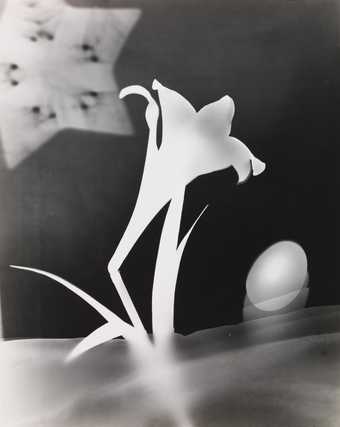
György Kepes
Lily and Egg
(c.1939)
Tate
© estate of György Kepes (Imre Kepes and Juliet Kepes Stone)
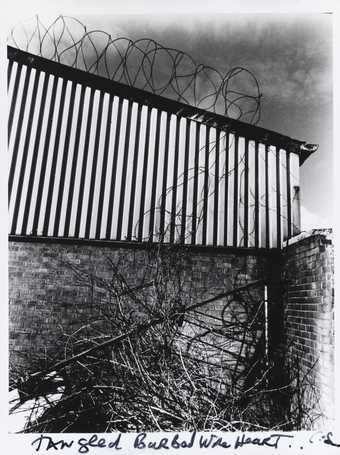
Chris Shaw
Tangled Barbed Wire Heart
(2007–12)
Tate

Francesca Woodman
Untitled, Providence, Rhode Island
(1975–8)
ARTIST ROOMS Tate and National Galleries of Scotland
© Woodman Family Foundation / Artist’s Rights Society (ARS), New York and DACS, London
Take black and white photographs of groups of objects or buildings.
- Photograph everyday objects and try and make them look interesting or iconic by photographing them from unusual angles, focusing in on details or playing with special effects.
- Look out for interesting shapes and patterns in the lights and darks of architectural structures. Features such as stairways or patterns of windows can often create interesting contrasts of light and darks.
- Explore the mood or atmosphere of shadowy interiors with your camera. Try half closing a curtain or lighting an interior with a lamp to create a sense of mood or atmosphere.
Night and Day

Vija Celmins
Night Sky #19
(1998)
ARTIST ROOMS Tate and National Galleries of Scotland
Draw or photograph the same scene at different times of the day and at night. This could be your street or a view from your window. How does the changing light affect how buildings, trees and obejcts appear?
Scan a photograph of your street at night into your computer. Use a photo editing tool to get rid of details so the lights and darks are exaggerated. Look again at Julian Opie’s Rain Footsteps Siren 2000
Create an eraser drawing using charcoal. Look at Vija Celmins's drawings for ideas. You will need a piece of white paper, some charcoal and an eraser. You will also need a photograph of a night-time scene.
- Cover your paper in charcoal.
- Look at your photograph and notice the light areas. (Scanning your photo into a computer and simplifying it using a picture editing tool to get rid of details might make it easier to see the areas of light).
- ‘Draw’ your night scene on your prepared charcoal surface. Use your eraser to get rid of the light areas on your charcoal surface. You could also work back into your drawing using the charcoal or a soft pencil to create extra dark areas of shadow or detail.
The Feeling and Meaning of Light and Dark
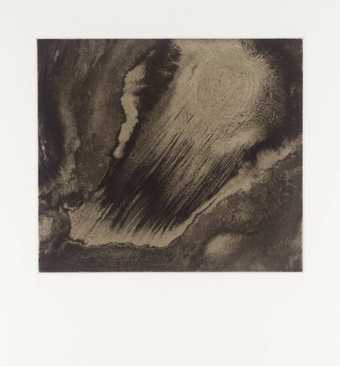
Sir Anish Kapoor CBE RA
[no title]
(2000)
Tate
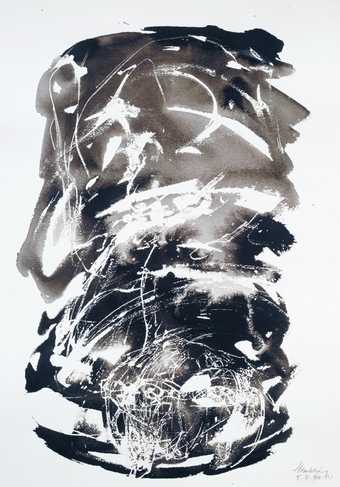
Maggi Hambling
Mud Dream 1
(1990)
Tate
© Maggi Hambling. All Rights Reserved 2020 / Bridgeman Images
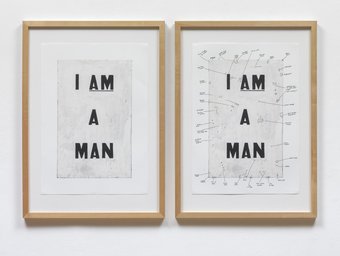
Glenn Ligon
Condition Report
(2000)
Lent by the American Fund for the Tate Gallery 2007
Use symbolic qualities of light and dark to create an artwork.
The artwork could be about mood and feelings. What feelings do light and dark suggest to you? Create a mood board of images that you associate with light and dark. Use these as the starting point of your artwork.
Use light and dark to explore something you feel strongly about. Explore how Glenn Ligon uses light and dark to express his ideas and beliefs. Much of his work relates to his experiences as an African American man living in the United States.

